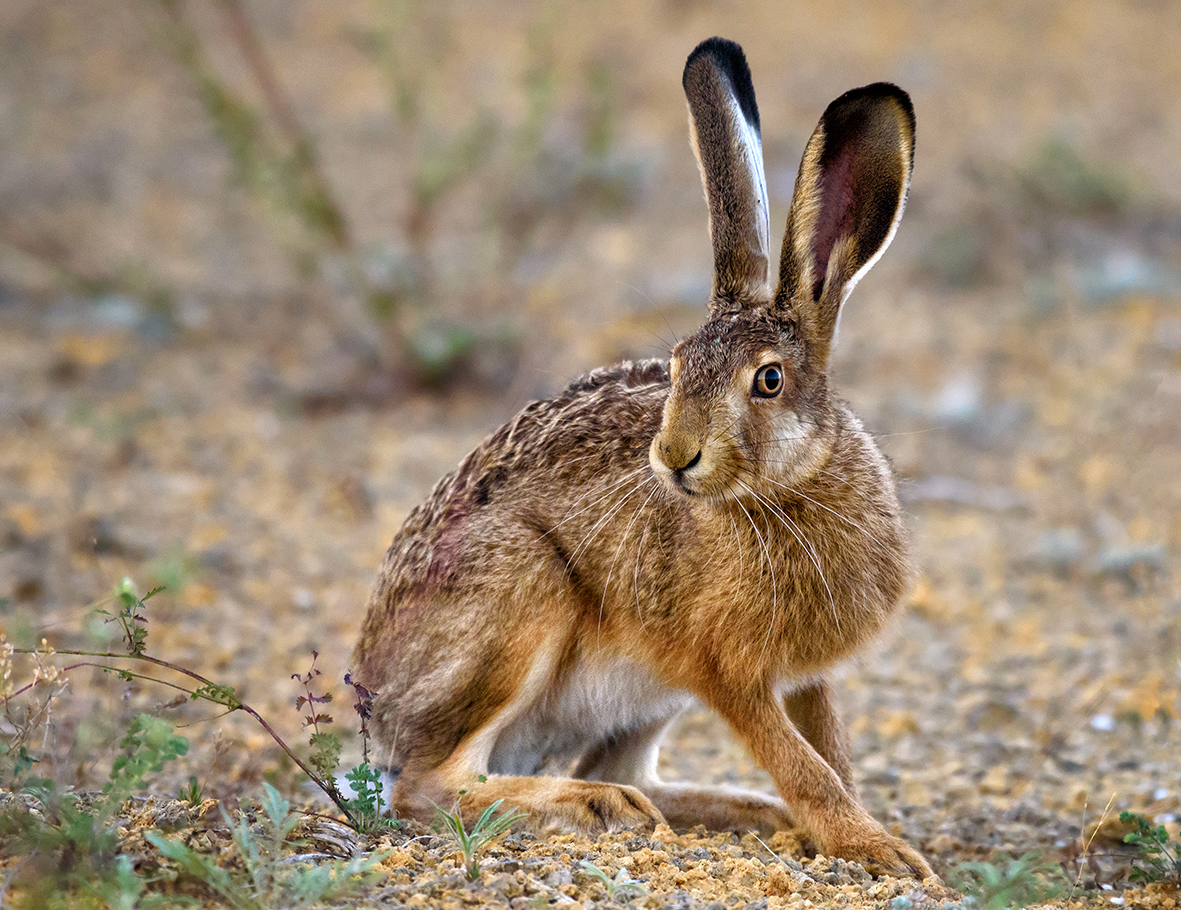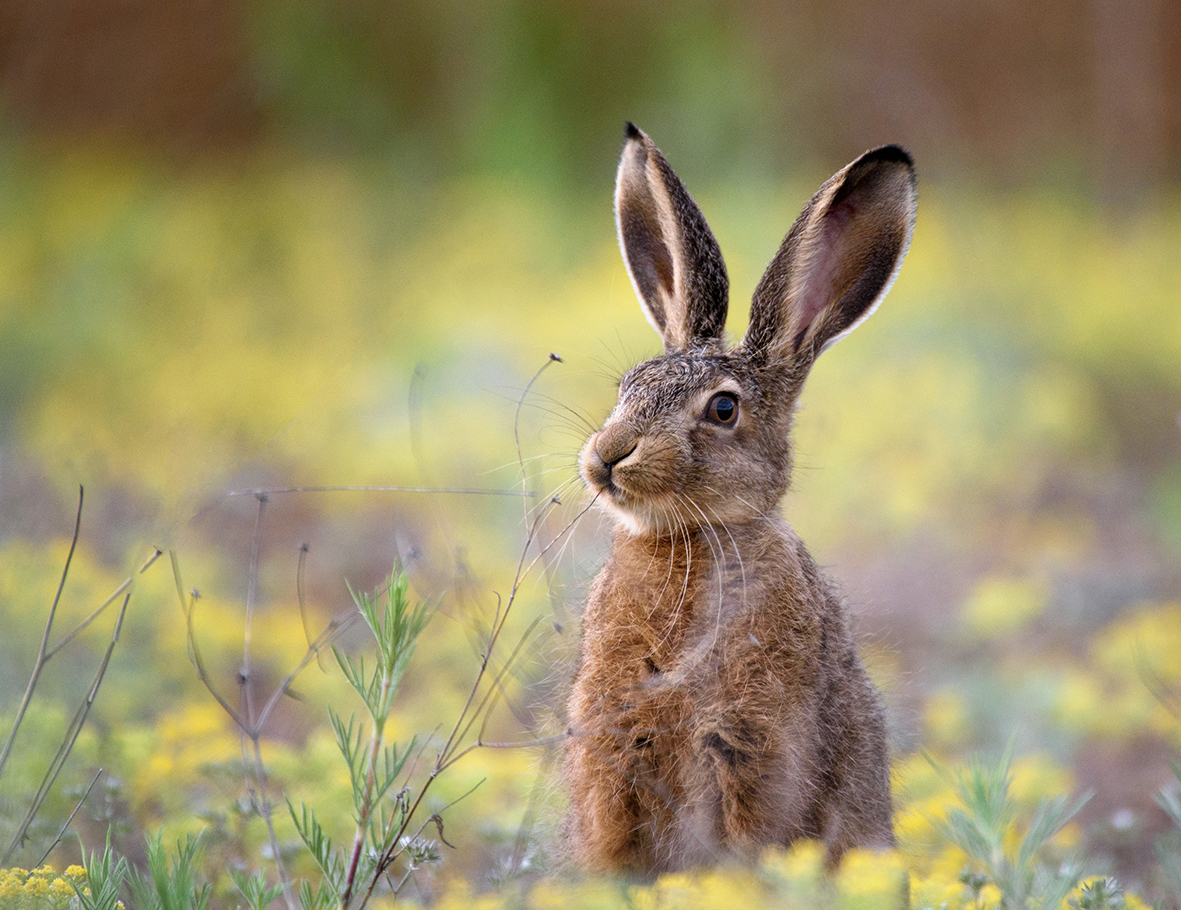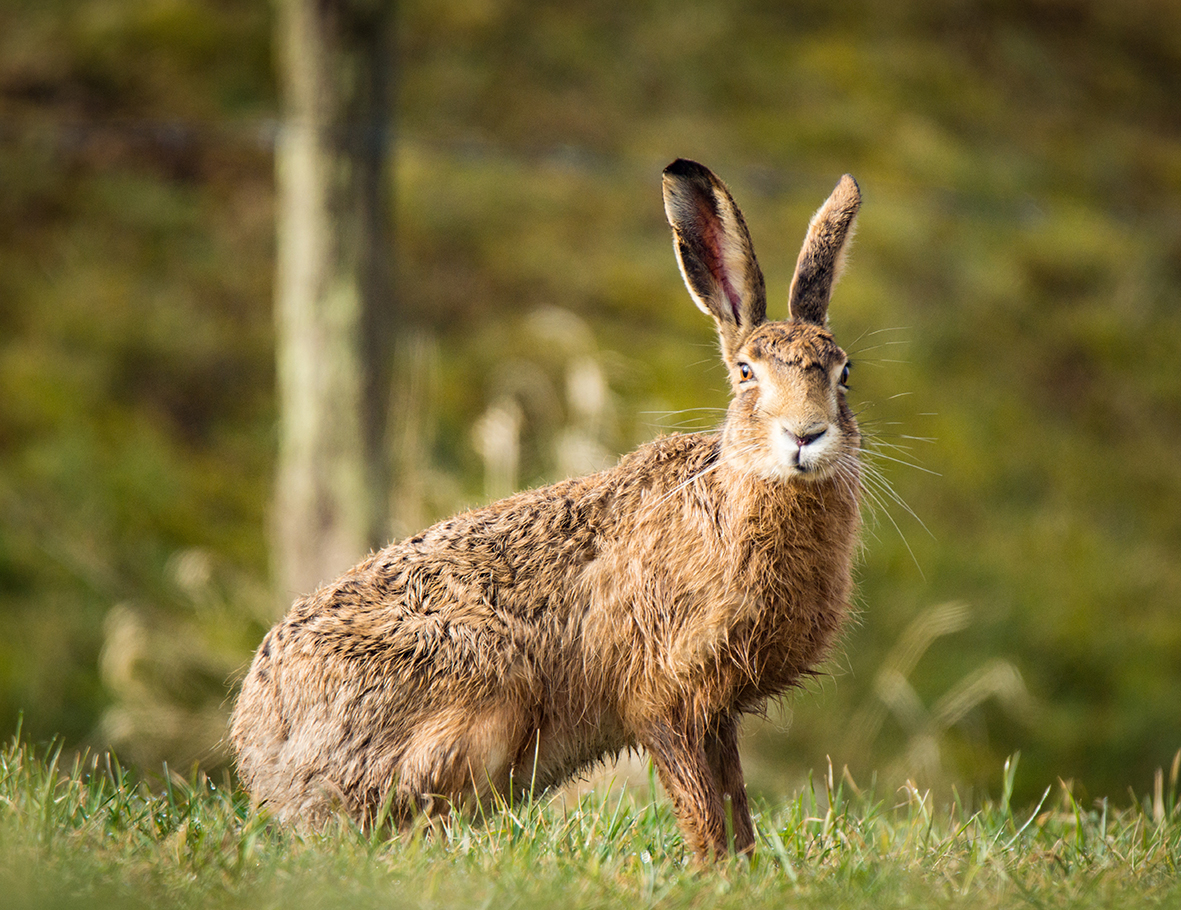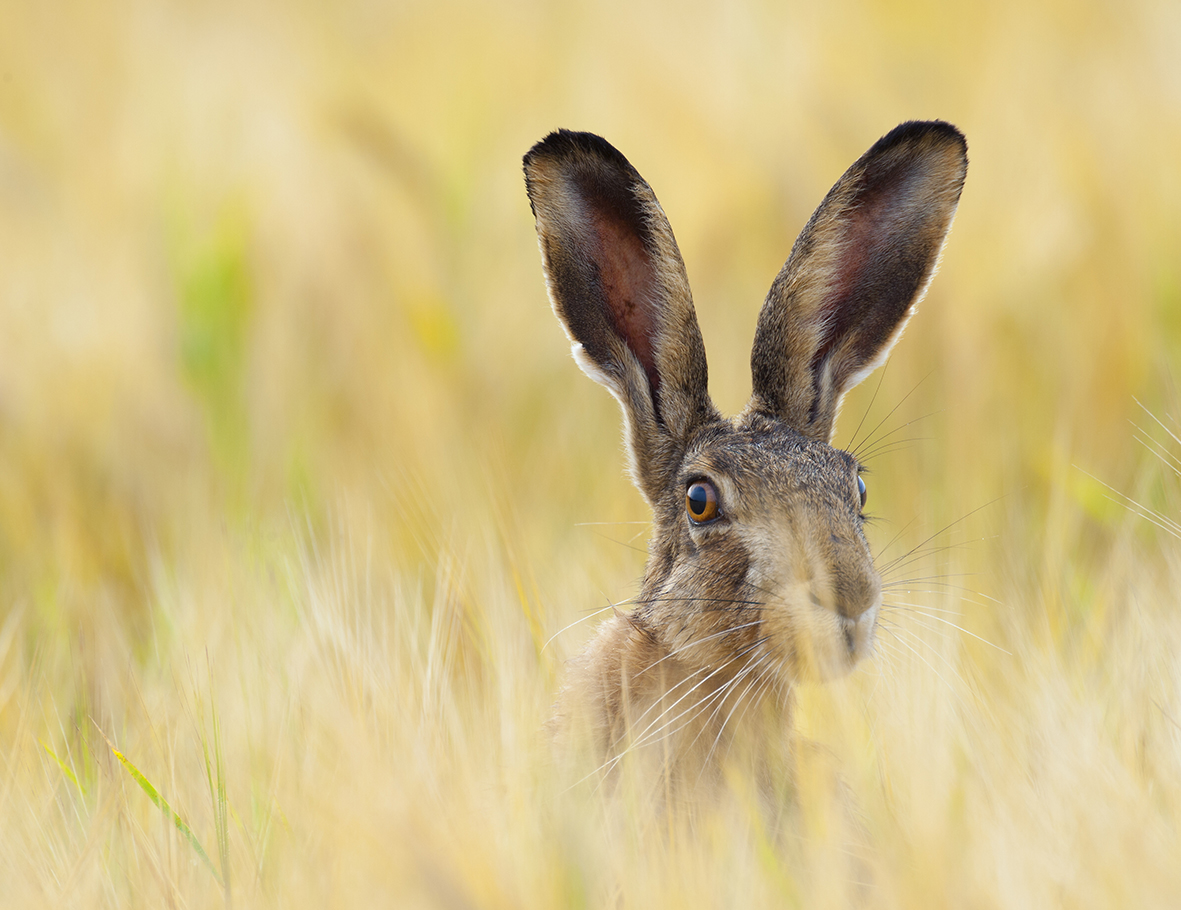Vienna
Endangered European Hares
The population of European Hares has decreased massively throughout Europe in the past 100 years. Research results show that the loss of habitat plays a major role.
The Academy is therefore supporting a European Hare project led by Prof. Dr. Walter Arnold, formally member of the University of Vienna, who states:
“The intensification of agriculture as well as related landscape consolidation and increasing field size, has resulted in a substantial loss of field margins and fallow land. European hares have thus not only been deprived of protective cover, but of the plant species with specific nutrient composition necessary for successful reproduction. In recent decades, the planting of maize has also increased in Europe. The maize plant offers the most energy output per square meter of planting surface and can be used in a variety of ways, such as in biogas production, as animal feed, and in sugar and starch production. The main disadvantage of maize cultivation however, aside from its influence on plant species diversity in fields, is the inferiority of the maize plant as a source of nutrition for wild animals. The negative consequences of maize as a dominant nutritional basis have been known for several centuries. A deficiency in niacin (vitamin B3) can result in symptoms like skin rashes, diarrhea, depression, and aggression, which is referred to in human medicine as “pellagra”. In veterinary medicine, a niacin deficiency is called “black tongue disease”.
To examine the negative effects of a diet dominated by maize on reproductive success in European hares, we decided to carry out in parallel a field study and a feeding experiment. In the field study in 2020, we acquired ten adult hares, which had been shot in different hunting territories with a high percentage of maize fields. Immediately after being shot, blood samples were taken via cardiac puncture and blood sugar levels were measured. Following a thorough pathological examination, liver samples were taken, and their niacin content was determined using gas chromatography.
We have been conducting the feeding experiment with the Institute’s population of European hares for many years. The biggest challenge was to develop a pellet containing a small amount of niacin but still palatable to our hares and which would provide them with the remaining essential micro and macro nutrients. At the same time, we needed to be able to form the feed mixture into pellets. After several failed attempts to produce a pellet which was stable in form, we recorded our first success with a mixture of shredded, whole maize plants, sunflower oil, lucerne flour and gelatin as a source of protein and bonding agent. We also used gelatin as a protein source to keep the tryptophan content low because an organism can synthesize niacin from tryptophan if too little vitamin B3 is ingested. The control group was fed these pellets with additional niacin in sufficient concentration. Unfortunately, even the control group lost so much weight that we had to interrupt this first trial.
For the next attempt, we decided to avoid the expensive commercial production of pellets through a supplier, and to produce our own feed pellet. With the financial support of the Academy for the Protection of Zoo Animals and Wildlife, we were able to purchase a pellet press. We could then rapidly produce small batches and could test their acceptance with our hares. Within a short time, we created a successful recipe. These pellets were supplemented by commercially available pure maize and lucerne pellets (Agrobs) and ground and mixed with pea protein isolate, sunflower oil, and molasses. This mixture was then homogenized and pelletized. These pellets are eagerly accepted by our hares.
We thus have the possibility of manipulating the niacin content experimentally and can simultaneously eliminate other negative effects of the experimental feed.
The feeding experiment is based on a crossover design. Our goal in the first step was to examine the potential changes in body weight and the niacin values in the blood. Twenty adult female hares were involved in the experiment and divided into two groups. The test group was fed the pellets described above. Our control group received the same pellet but supplemented with vitamin B3 in the form of nicotinamide, which is recommended in the literature for Leporidae. At the beginning of the experiment, blood samples were taken from all female hares. After four weeks, a further blood sample was taken and subsequently the feeding groups were switched. The final blood samples were taken after four further weeks.
These blood samples were then analyzed in our chemistry laboratory by late March and show that we were able to produce niacin deficiency without concurrent weight loss. A reduction in weight must be avoided to allow us to attribute niacin deficiency to the expected, low reproduction rate. Starting in March 2021, the female hares will be bred as a continuation of the feeding experiment. The emphasis will be on reproduction probability and the survival rate of offspring in the niacin deficient group in comparison to the control group.”







